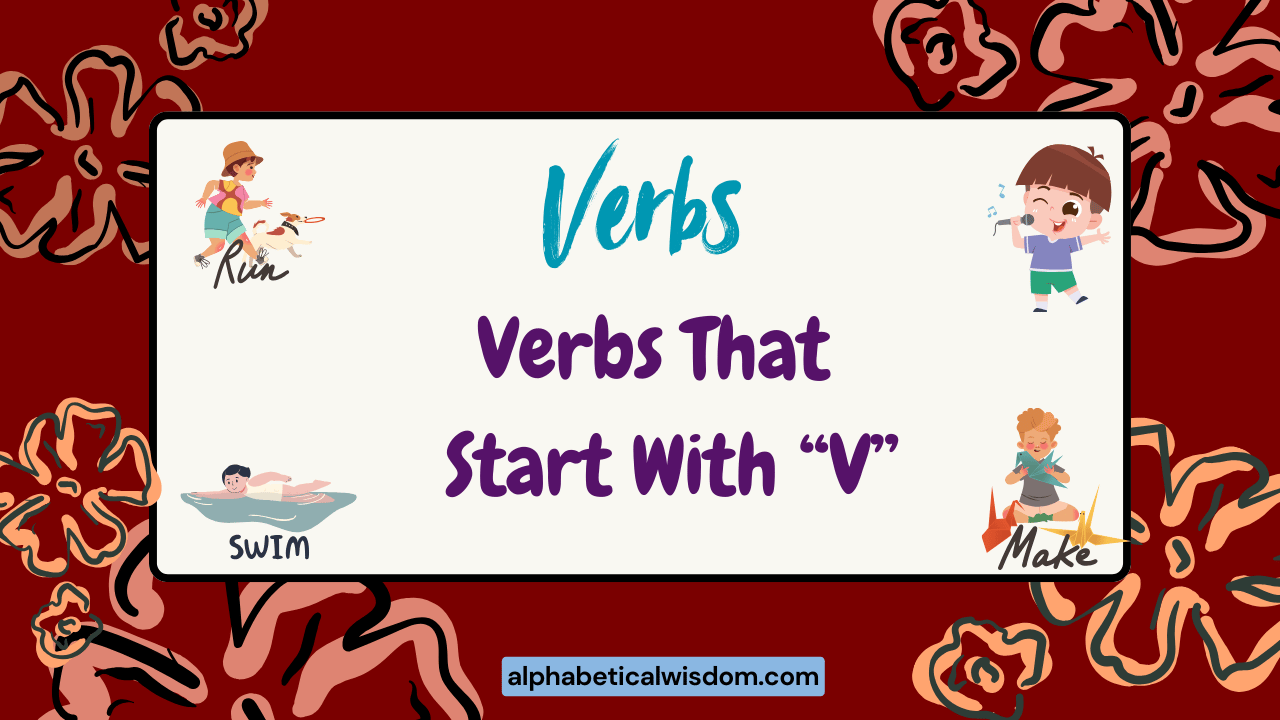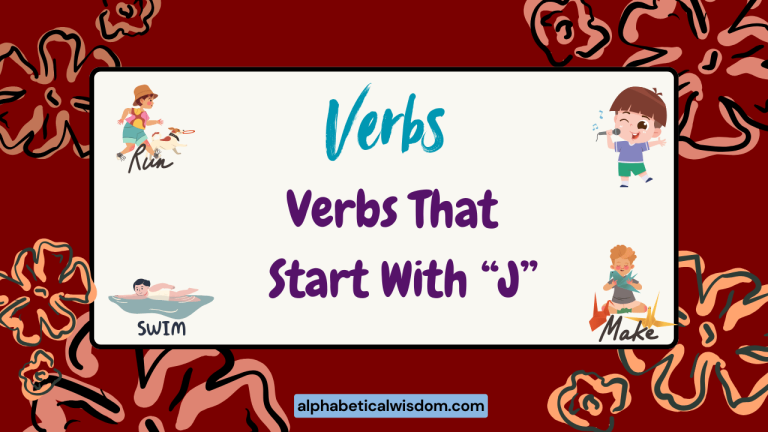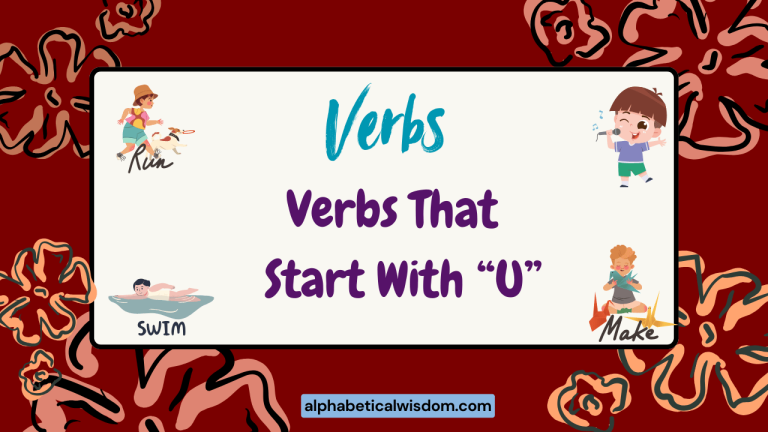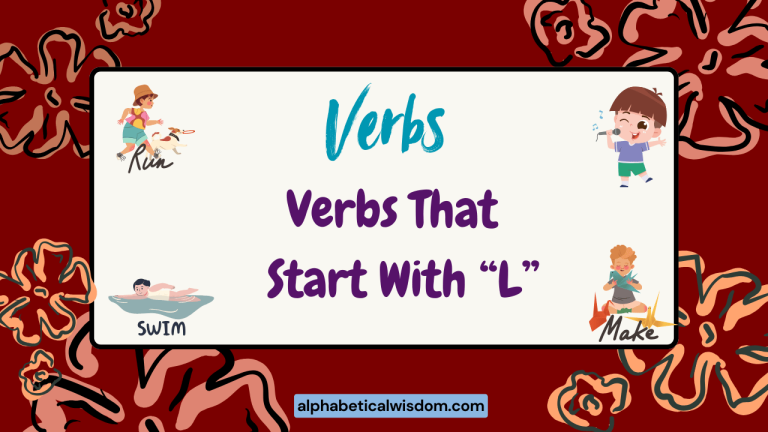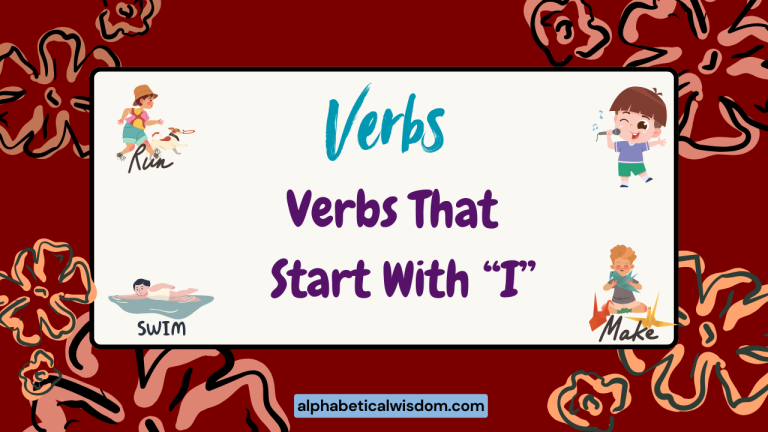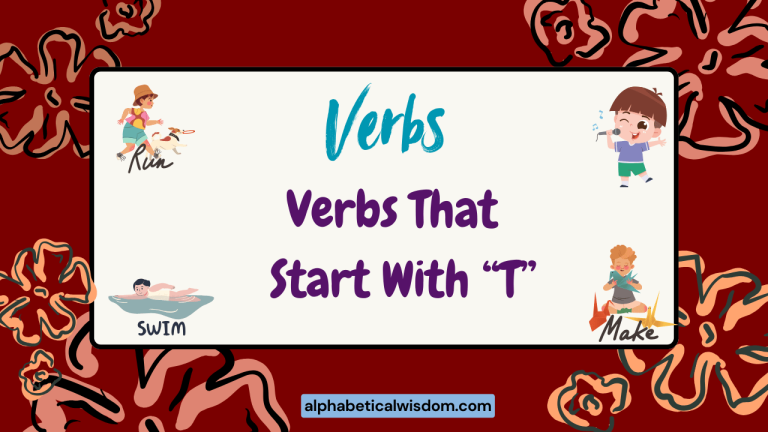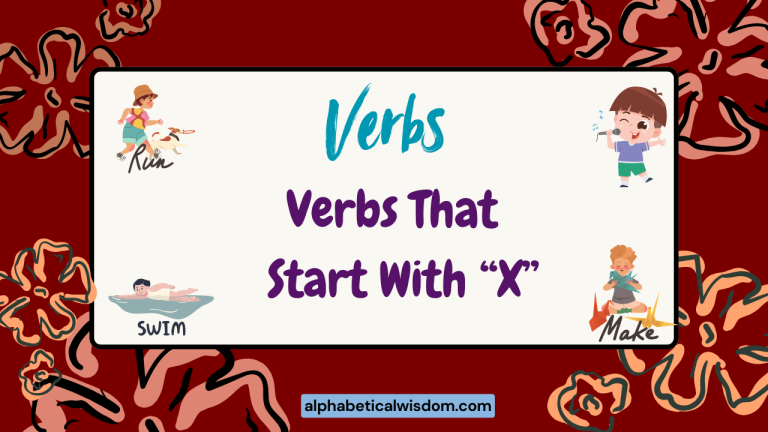Verbs Followed by Gerunds: A Comprehensive Guide
Understanding which verbs can be followed by gerunds is crucial for mastering English grammar. This knowledge enhances fluency and accuracy in both writing and speaking.
This guide is designed to provide a detailed explanation of verbs followed by gerunds, offering numerous examples, usage rules, and practice exercises. Whether you’re an ESL student, a writer seeking to refine your skills, or simply someone interested in improving your grammar, this comprehensive resource will help you confidently navigate this aspect of English grammar.
Table of Contents
- Introduction
- Definition of Gerunds and Verbs Followed by Gerunds
- Structural Breakdown
- Categories of Verbs Followed by Gerunds
- Examples of Verbs Followed by Gerunds
- Usage Rules
- Common Mistakes
- Practice Exercises
- Advanced Topics
- FAQ
- Conclusion
Definition of Gerunds and Verbs Followed by Gerunds
A gerund is a verbal noun, formed by adding “-ing” to the base form of a verb. It functions as a noun in a sentence, meaning it can act as a subject, object, or complement. For example, in the sentence “Swimming is my favorite exercise,” the word “swimming” is a gerund acting as the subject.
Certain verbs in English are consistently followed by gerunds rather than infinitives. These verbs have been established through usage and grammatical convention.
Recognizing these verbs is essential for constructing grammatically correct sentences. It’s not always intuitive which verbs take gerunds, so memorization and practice are key.
A verb followed by a gerund creates a verb phrase where the gerund acts as the object of the main verb.
Consider the difference between “I enjoy reading” (gerund) and “I want to read” (infinitive). Both sentences are grammatically correct, but they illustrate that “enjoy” is followed by a gerund, while “want” is followed by an infinitive. Understanding this distinction is paramount for clear and accurate communication.
Structural Breakdown
The basic structure of a sentence with a verb followed by a gerund is: Subject + Verb + Gerund. The gerund acts as the direct object of the verb. For instance, in “She enjoys dancing,” “she” is the subject, “enjoys” is the verb, and “dancing” is the gerund.
This structure can be expanded to include additional elements such as adverbs, adjectives, and prepositional phrases. For example: “He considered carefully investing his money” shows the adverb “carefully” modifying the gerund phrase. Also, “They appreciate him helping with the project,” demonstrates a possessive pronoun before the gerund.
Understanding the different possible structures helps in constructing more complex and nuanced sentences. The core remains the same, but the added elements enrich the meaning and provide more detail.
Recognizing these patterns allows for greater flexibility and precision in writing and speaking.
Categories of Verbs Followed by Gerunds
Many verbs commonly followed by gerunds fall into specific categories. These categories help in understanding the semantic relationships between the verb and the gerund.
Knowing these can make it easier to remember and apply the correct grammatical structure.
Verbs of Enjoyment and Dislike
This category includes verbs that express feelings of pleasure, satisfaction, or aversion. Examples include: enjoy, dislike, hate, like, love, detest, resent.
Verbs of Completion and Avoidance
These verbs relate to finishing an action or preventing it. Examples include: finish, stop, quit, avoid, postpone, delay.
Verbs of Consideration and Suggestion
This category includes verbs that involve thinking about or proposing an action. Examples include: consider, suggest, recommend, imagine, contemplate.
Verbs of Admission and Denial
These verbs relate to acknowledging or rejecting an action. Examples include: admit, deny, confess, acknowledge.
Verbs Involving Difficulty and Success
This category includes verbs that express challenges or achievements. Examples include: practice, risk, miss, resist, tolerate, understand, involve.
Prepositional Verbs
Many verbs are followed by a preposition, which then requires a gerund. Examples include: approve of, look forward to, insist on, rely on, succeed in, be used to, be accustomed to, think about.
Examples of Verbs Followed by Gerunds
Here are several tables providing examples of verbs followed by gerunds in sentences. These examples are categorized to help illustrate the different uses and contexts in which these verbs appear.
Each table offers a wide range of sentences to showcase the versatility of the structure.
Table 1: Verbs of Enjoyment and Dislike
The following table provides examples using verbs of enjoyment and dislike followed by gerunds. Notice how each sentence expresses a feeling or emotion related to the activity described by the gerund.
| Verb | Example Sentence |
|---|---|
| Enjoy | She enjoys reading novels in her free time. |
| Dislike | I dislike waiting in long lines at the grocery store. |
| Hate | He hates doing the dishes after dinner. |
| Like | They like going to the beach on weekends. |
| Love | We love spending time with our family. |
| Detest | She detests cleaning the bathroom. |
| Resent | He resents having to work overtime. |
| Appreciate | I appreciate you helping me with this project. |
| Fancy | Do you fancy going out for dinner tonight? |
| Adore | She adores watching old movies. |
| Can’t stand | I can’t stand listening to loud music early in the morning. |
| Loathe | They loathe wasting time on unproductive meetings. |
| Abhor | He abhors being late for appointments. |
| Relish | We relish eating fresh, home-cooked meals. |
| Savor | They savor experiencing new cultures when they travel. |
| Take pleasure in | She takes pleasure in gardening in her backyard. |
| Delight in | He delights in solving complex puzzles. |
| Be fond of | They are fond of visiting historical sites. |
| Be keen on | She is keen on learning new languages. |
| Be partial to | He is partial to drinking coffee in the morning. |
| Disapprove of | The teacher disapproves of students cheating on exams. |
| Be averse to | I am averse to taking unnecessary risks. |
| Object to | They object to being treated unfairly. |
| Be against | She is against polluting the environment. |
Table 2: Verbs of Completion and Avoidance
The following table presents examples using verbs of completion and avoidance followed by gerunds. These sentences illustrate actions that are either being finished or prevented.
| Verb | Example Sentence |
|---|---|
| Finish | He finished writing his report yesterday. |
| Stop | She stopped smoking last year. |
| Quit | They quit playing video games to focus on their studies. |
| Avoid | We avoid eating fast food as much as possible. |
| Postpone | They postponed making a decision until next week. |
| Delay | He delayed paying the bills until the last minute. |
| Cease | The company ceased producing that model of car. |
| Discontinue | The program discontinued offering that course due to low enrollment. |
| Put off | She put off cleaning the house until the weekend. |
| Give up | He gave up trying to fix the old computer. |
| Forgo | They forgo eating dessert to maintain a healthy diet. |
| Evade | He evaded answering the difficult question. |
| Circumvent | They circumvented following the usual procedures. |
| Shirk | He shirks doing his responsibilities whenever possible. |
| Elude | The solution eluded finding for a long time. |
| Ward off | She warded off catching a cold by taking vitamins. |
| Stave off | They staved off feeling hungry by eating a snack. |
| Hold off | He held off making a purchase until he had more information. |
| Resist | She resisted eating the tempting chocolate cake. |
| Refrain from | They refrained from making comments during the meeting. |
| Abstain from | He abstained from drinking alcohol for health reasons. |
| Desist from | The police ordered the protesters to desist from blocking the road. |
| Eschew | She eschews eating processed foods. |
| Steer clear of | They steer clear of getting involved in office politics. |
Table 3: Verbs of Consideration and Suggestion
This table provides examples using verbs of consideration and suggestion followed by gerunds. These sentences involve thinking about or proposing actions.
| Verb | Example Sentence |
|---|---|
| Consider | They considered moving to a new city. |
| Suggest | She suggested going to the movies tonight. |
| Recommend | I recommend reading that book. |
| Imagine | He imagines living on a tropical island. |
| Contemplate | She contemplated studying abroad for a year. |
| Think about | We are thinking about buying a new car. |
| Ponder | He pondered investing in the stock market. |
| Reflect on | She reflected on traveling through Europe last summer. |
| Deliberate on | They deliberated on accepting the job offer. |
| Mull over | He mulled over starting his own business. |
| Envisage | She envisages working as a doctor in the future. |
| Foresee | They foresee expanding their company internationally. |
| Anticipate | He anticipates receiving a promotion soon. |
| Propose | She proposed organizing a charity event. |
| Advocate | They advocate reducing carbon emissions. |
| Support | The community supports building a new park. |
| Promote | The organization promotes recycling to protect the environment. |
| Second | I second nominating her for the award. |
| Favor | He favors implementing new policies to improve efficiency. |
| Urge | The doctor urged him to consider quitting smoking. |
| Entertain | She entertained the idea of writing a novel. |
| Brood over | He brooded over failing the exam. |
| Ruminate on | She ruminated on the implications of accepting the offer. |
| Speculate about | They speculated about investing in renewable energy. |
Table 4: Verbs of Admission and Denial
This table provides examples using verbs of admission and denial followed by gerunds. These sentences involve acknowledging or rejecting actions.
| Verb | Example Sentence |
|---|---|
| Admit | He admitted cheating on the test. |
| Deny | She denied stealing the money. |
| Confess | He confessed to lying about his age. |
| Acknowledge | They acknowledged making a mistake. |
| Concede | He conceded losing the argument. |
| Profess | She professed knowing nothing about the incident. |
| Avow | He avowed supporting the cause. |
| Own up to | She owned up to breaking the vase. |
| Plead guilty to | He pleaded guilty to driving under the influence. |
| Take responsibility for | They took responsibility for causing the accident. |
| Disavow | She disavowed supporting the controversial policy. |
| Repudiate | He repudiated being involved in the scandal. |
| Recant | She recanted making the false statement. |
| Contradict | He contradicted claiming that he was innocent. |
| Refute | They refuted being responsible for the damage. |
| Gainsay | No one can gainsay the importance of education. |
| Withhold | He withheld reporting the incident to the authorities. |
| Keep secret | She kept secret having a second job. |
| Cover up | They covered up making the error. |
| Conceal | He concealed having a criminal record. |
Table 5: Verbs Involving Difficulty and Success
This table provides examples using verbs involving difficulty and success followed by gerunds. These sentences express challenges or achievements related to certain actions.
| Verb | Example Sentence |
|---|---|
| Practice | She practices playing the piano every day. |
| Risk | He risked losing his job by speaking out. |
| Miss | I miss traveling to new places. |
| Resist | She resisted eating the tempting dessert. |
| Tolerate | He cannot tolerate being interrupted. |
| Understand | I don’t understand speaking so rudely. |
| Involve | The project involves coordinating with multiple teams. |
| Entail | The job entails working long hours. |
| Necessitate | The situation necessitates taking immediate action. |
| Require | The course requires completing several assignments. |
| Entail | The job entails working long hours. |
| Incur | He incurred losing a lot of money due to bad investments. |
| Bear | I cannot bear listening to him complain all the time. |
| Stand | She cannot stand being treated unfairly. |
| Withstand | The building can withstand being exposed to extreme weather. |
| Endure | He had to endure working in difficult conditions. |
| Get away with | He got away with cheating on the exam. |
| Get through | She got through finishing the project on time. |
| Follow through with | He followed through with completing his promise. |
Usage Rules
When using verbs followed by gerunds, there are several key rules to remember to ensure correct grammar. These rules cover the basic structure, the use of possessives, and exceptions to the general patterns.
Rule 1: Basic Structure: The basic structure is Subject + Verb + Gerund. Ensure that the verb is one that typically takes a gerund. For example, “She enjoys dancing” is correct, while “She enjoys to dance” is incorrect.
Rule 2: Possessives Before Gerunds: When the gerund has a subject, use the possessive form of the noun or pronoun. For example, “They appreciate his helping with the project” or “They appreciate John’s helping with the project.”
Rule 3: Prepositional Verbs: If a verb is followed by a preposition, the word following the preposition must be a gerund. For example, “He is good at solving problems” is correct. “He is good at to solve problems” is incorrect.
Rule 4: Avoid Infinitives: Do not use infinitives after verbs that require gerunds. This is a common mistake. For example, “I enjoy to swim” is incorrect; the correct form is “I enjoy swimming.”
Rule 5: Contextual Clarity: Ensure that the gerund is clear and unambiguous in its meaning. Use additional words or phrases to clarify the action if necessary. For example, instead of “He considered leaving,” you might say “He considered leaving his job.”
Common Mistakes
Several common mistakes can occur when using verbs followed by gerunds. Recognizing these errors and understanding how to correct them is essential for improving grammar accuracy.
Mistake 1: Using Infinitives Instead of Gerunds: This is the most frequent error. For example:
| Incorrect | Correct |
|---|---|
| I enjoy to swim. | I enjoy swimming. |
| She dislikes to clean. | She dislikes cleaning. |
Mistake 2: Omitting the Possessive Before the Gerund: When the gerund has a subject, the possessive form should be used.
| Incorrect | Correct |
|---|---|
| They appreciate him help. | They appreciate his helping. |
| I noticed John leave. | I noticed John’s leaving. |
Mistake 3: Incorrect Prepositions: Using the wrong preposition with a verb can lead to grammatical errors.
| Incorrect | Correct |
|---|---|
| He is good in solving problems. | He is good at solving problems. |
| She is interested on learning new languages. | She is interested in learning new languages. |
Mistake 4: Confusing Gerunds with Present Participles: Both gerunds and present participles end in “-ing,” but they have different functions. A gerund acts as a noun, while a present participle acts as an adjective or part of a continuous verb tense.
| Gerund (Noun) | Present Participle (Adjective/Verb) |
|---|---|
| Swimming is my favorite exercise. | The swimming pool is open. |
| He enjoys reading books. | He is reading a book. |
Practice Exercises
Test your understanding of verbs followed by gerunds with these practice exercises. Fill in the blanks with the correct form of the verb in parentheses.
Check your answers against the solutions provided.
Exercise 1
Complete the following sentences with the correct gerund form of the verb in parentheses.
| # | Sentence | Answer |
|---|---|---|
| 1 | She enjoys __________ (dance) in the rain. | dancing |
| 2 | He dislikes __________ (wait) for the bus. | waiting |
| 3 | They considered __________ (move) to a new city. | moving |
| 4 | I avoid __________ (eat) fast food. | eating |
| 5 | She finished __________ (write) her report. | writing |
| 6 | He admitted __________ (cheat) on the test. | cheating |
| 7 | They suggested __________ (go) to the park. | going |
| 8 | I recommend __________ (read) this book. | reading |
| 9 | She practices __________ (play) the piano. | playing |
| 10 | He risked __________ (lose) his job. | losing |
Exercise 2
Choose the correct option (gerund or infinitive) to complete each sentence.
| # | Sentence | Answer |
|---|---|---|
| 1 | She enjoys __________ (swim/to swim) in the ocean. | swimming |
| 2 | He wants __________ (travel/traveling) to Europe. | to travel |
| 3 | They decided __________ (go/going) to the concert. | to go |
| 4 | I avoid __________ (eat/to eat) junk food. | eating |
| 5 | She promised __________ (help/helping) me with the project. | to help |
| 6 | He admitted __________ (make/making) a mistake. | making |
| 7 | They plan __________ (visit/visiting) their relatives. | to visit |
| 8 | I prefer __________ (read/reading) books over watching TV. | reading |
| 9 | She offered __________ (help/helping) with the dishes. | to help |
| 10 | He finished __________ (write/writing) the letter. | writing |
Exercise 3
Correct the sentences that have errors in the use of gerunds. If the sentence is correct, write “Correct.”
| # | Sentence | Answer |
|---|---|---|
| 1 | I enjoy to play tennis. | I enjoy playing tennis. |
| 2 | She dislikes cleaning the house. | Correct |
| 3 | They appreciate him to help with the project. | They appreciate his helping with the project. |
| 4 | He is good at solve problems. | He is good at solving problems. |
| 5 | I avoid to eat fast food. | I avoid eating fast food. |
| 6 | She wants going to the party. | She wants to go to the party. |
| 7 | They considered move to a new city. | They considered moving to a new city. |
| 8 | I look forward to see you. | I look forward to seeing you. |
| 9 | He admitted cheat on the test. | He admitted cheating on the test. |
| 10 | She finished writing her report. | Correct |
Advanced Topics
For advanced learners, understanding more complex aspects of gerund usage can further refine grammatical skills. These topics include the use of perfect gerunds and passive gerunds, which add nuance and precision to writing.
Perfect Gerunds
A perfect gerund (having + past participle) indicates an action that was completed before the action of the main verb. It provides a sense of time sequence. For example, “He denied having cheated on the test” indicates that the cheating occurred before the denial.
Perfect gerunds are useful for emphasizing the completion of an action in the past relative to another action. They add a layer of complexity and can make sentences more precise. Consider the difference between “He admitted cheating” and “He admitted having cheated.” The latter emphasizes that the cheating was completed before the admission.
Passive Gerunds
A passive gerund (being + past participle) indicates that the subject of the gerund is receiving the action, not performing it. For example, “He enjoys being driven to work” means that someone else is driving him.
Passive gerunds are useful when the focus is on the receiver of the action rather than the performer. They are commonly used with verbs of liking or disliking. For example, “She hates being interrupted” emphasizes her dislike of being interrupted, rather than who is doing the interrupting.
FAQ
Here are some frequently asked questions about verbs followed by gerunds, along with detailed answers to clarify common points of confusion.
Q1: How can I remember which verbs are followed by gerunds?
A1: Memorization is key. Create flashcards or use mnemonic devices to help you remember the list of verbs. Practice writing sentences using these verbs followed by gerunds. Over time, you’ll develop an intuitive understanding of which verbs take gerunds.
Q2: What is the difference between a gerund and a present participle?
A2: A gerund functions as a noun, while a present participle functions as an adjective or part of a continuous verb tense. For example, “Swimming is my favorite exercise” (gerund) vs. “He is swimming in the pool” (present participle).
Q3: Can a gerund be the subject of a sentence?
A3: Yes, a gerund can act as the subject of a sentence. For example, “Reading is a good habit.”
Q4: What happens if I use an infinitive instead of a gerund?
A4: Using an infinitive instead of a gerund after certain verbs will result in a grammatically incorrect sentence. For example, “I enjoy to swim” is incorrect. The correct form is “I enjoy swimming.”
Q5: Do all verbs followed by prepositions require a gerund?
A5: Yes, if a verb is followed by a preposition, the word following the preposition must be a gerund. For example, “He is good at solving problems.”
Q6: How do I use a possessive pronoun or noun before a gerund?
A6: Use the possessive form of the noun or pronoun before the gerund. For example, “They appreciate his helping with the project” or “They appreciate John’s helping with the project.”
Q7: What is a perfect gerund, and how is it used?
A7: A perfect gerund (having + past participle) indicates an action that was completed before the action of the main verb. For example, “He denied having cheated on the test.”
Q8: What is a passive gerund, and how is it used?
A8: A passive gerund (being + past participle) indicates that the subject of the gerund is receiving the action. For example, “She hates being interrupted.”
Q9: Are there any exceptions to the rule that certain verbs are always followed by gerunds?
A9: While certain verbs strongly prefer gerunds, some can be followed by infinitives with a change in meaning. For example, “I stopped smoking” (I quit smoking) vs. “I stopped to smoke” (I paused to smoke).
Q10: How can I improve my understanding of verbs followed by gerunds?
A10: Practice regularly by writing sentences, completing exercises, and reading extensively. Pay attention to how native speakers use these verbs in their writing and speech. Over time, you’ll develop a strong command of this aspect of English grammar.
Conclusion
Mastering the use of verbs followed by gerunds is essential for achieving fluency and accuracy in English. By understanding the definition, structural patterns, usage rules, and common mistakes, learners can significantly improve their grammatical skills.
Remember that practice and exposure to the language are key to internalizing these concepts.
Continue to practice writing sentences using verbs followed by gerunds,
and seek feedback from native speakers or language instructors. With consistent effort, you’ll confidently navigate this aspect of English grammar and enhance your overall communication skills.
Whether you’re writing a formal report, engaging in casual conversation, or expressing your thoughts in creative writing, a solid understanding of verbs followed by gerunds will serve you well.
